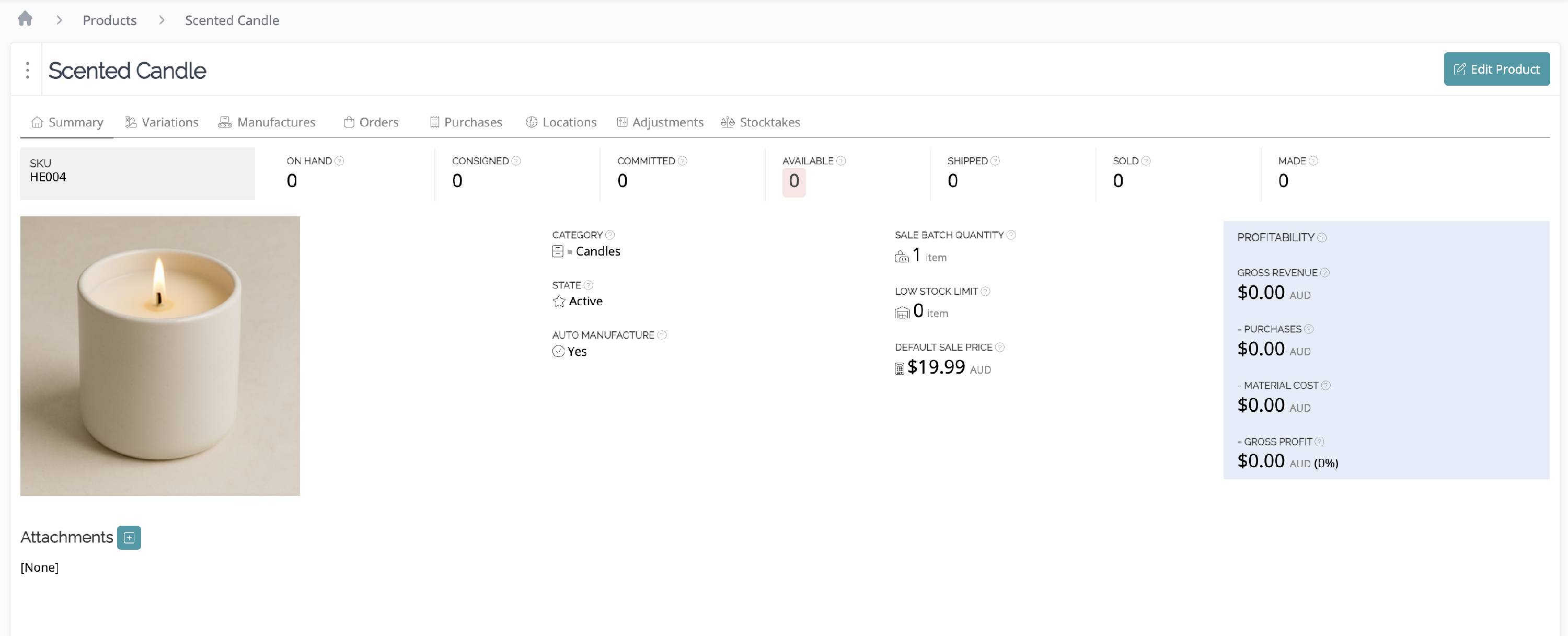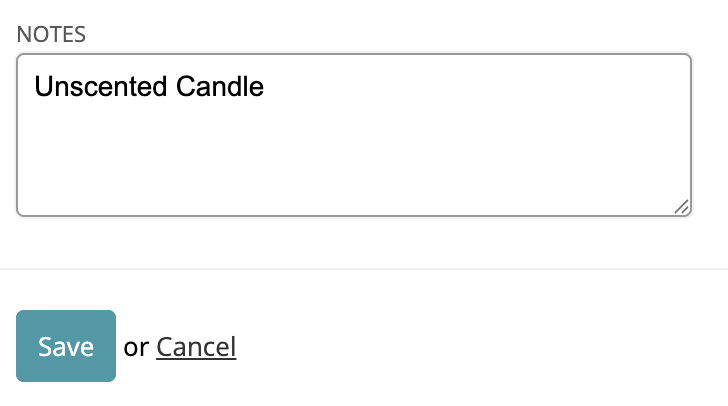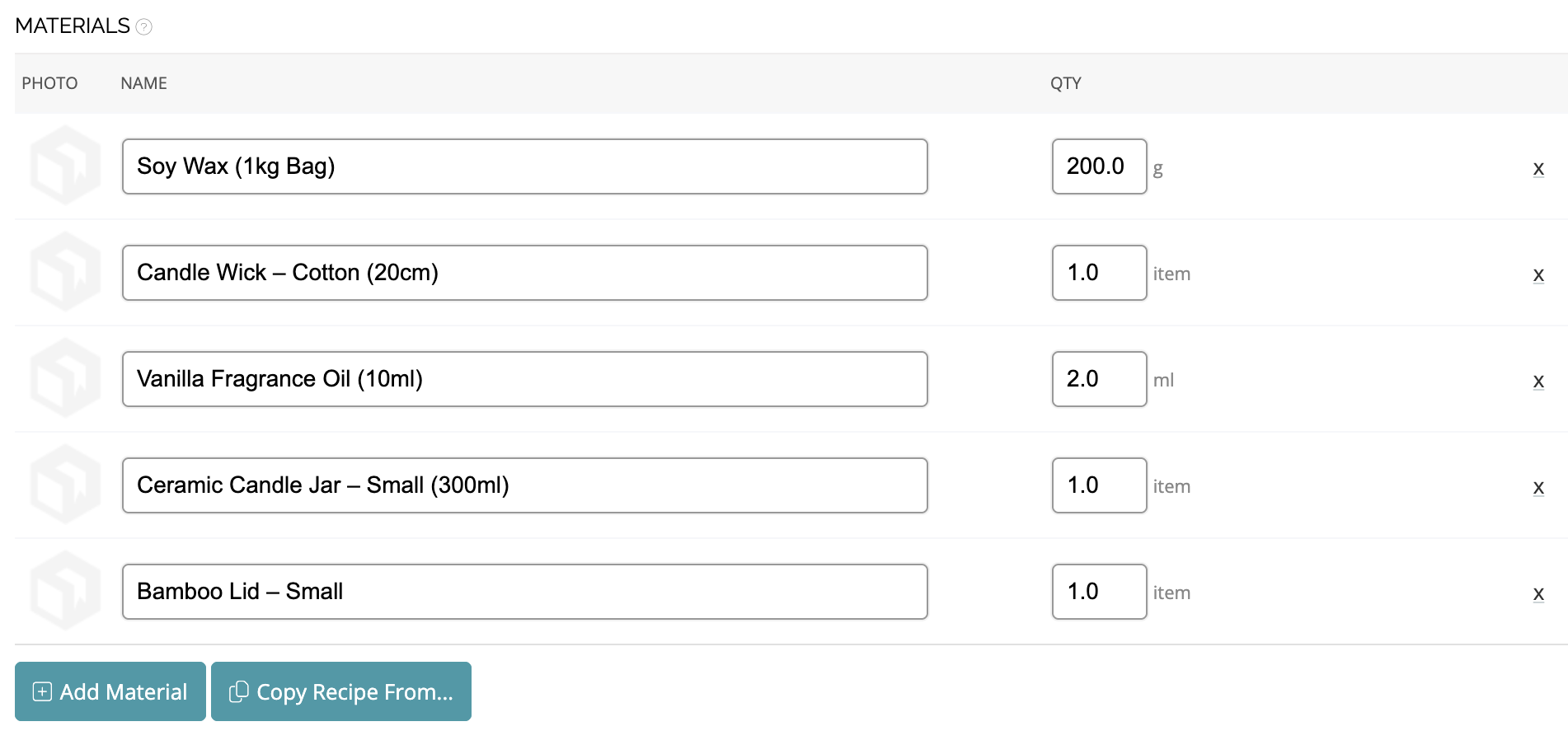TUTORIAL: Introduction to Variations
We’ll cover:
- What are Variations?
- Locating your Product
- Creating Variation Attributes & Values
- Add your First Variation
- Adding a Recipe to a Variation
What are Variations?
You can add a new variation in two ways:
- Variations will pull in automatically from many of our supported Integrations.
- You can also add a Variation manually, using the Add Variation form (which we focus on in this guide)
We’ll walk through how to set up variations for a product called “Scented Candle” that comes in three scents: Lavender, Vanilla, and Unscented.
Locating your Product
- In the left-hand sidebar of the Overview page, click Products.
- From your product list, find and click on your existing product. For this example, we will use “Scented Candle”.
You’ll land on the product detail page.

Navigate to the Variations tab
- At the top of the product detail page, click the Variations tab.
This will redirect you to the variation section where you’ll add and manage all variations.

Creating Variation Attributes & Values
For this tutorial, we’ll create an attribute called Scent with three values: Lavender, Vanilla, and Unscented.
From the Variations tab, click Manage Attributes -> Add Variation Attributes.
This will bring you to the New Variation Attribute form

Enter the Attribute details
a. Name - This is the name used to group your attributes. In this case, the attribute will be Scent
b. Values - These are the possible options for the attributes. In this case, we have Lavender, Vanilla, and Unscented

- Once all Scent values are added, click Save.
This attribute now defines the different options your customers can choose from, and each one will be trackable separately.
Now, the Variation Attributes page should look similar to this;

Tip: You can always edit attribute values later by clicking the + or edit icon next to each Attribute.
Add your First Variation
Now that we have the attributes all set up - we can move on to setting up a variation for the Unscented variation. Click the Add Variation button in the upper right-hand side of the variation page.

This opens the “Add Variation” form, where you will notice some key fields:
- Attributes: This is the unique value of your product variation, you can also create a new attribute value directly from this field.
- SKU: If you use stock-keeping codes to identify your variation, you can key it here. These codes are fully searchable in the system, making it a quick way to find your variation without typing the full name.
Image: This allows you to upload an image that represents the variation. This is optional, but it can be a good way of quickly identifying the variation in your variation list.

Variation Sales Information
- Auto Manufacture: If Auto Manufacture is on, all new orders for this variation will automatically have a manufacture created. Auto Manufactures will only be created for orders created after this option is switched on.
- Default Sale Price: This will be set as the default price when you create a new manual order for this variation and can be changed on the order form if different. This value doesn't modify imported orders.
- Low Stock Limit: This allows you to define the minimum quantity of this variation that should be in stock before it is marked with a stock status of "low stock." This is a helpful way to stay on top of low stock levels and avoid running out unexpectedly.
State: This defines the status of this variation. Active variations will display in your lists by default, whereas Archived variations will be hidden until explicitly searched for.

Additional Details
Notes: Add any notes or extra information not covered elsewhere


We can follow the same process for the other 2 attributes to create the rest of our tracked variations;

Adding a Recipe to a Variation
- In the Variations list, find “Scented Candle - Vanilla”.
- Click the ⋯ (three-dot) menu to the left of the name, then select Create Recipe.
- The new recipe page will preload the base recipe from your original candle product.
- Add Vanilla Fragrance Oil as an additional material.
Click Save.

It is a good idea to create the product's recipe by listing any common materials before creating your variation recipes. This way, you won't need to re-add the common materials between variations each time.
Wrap-Up 🎉
- Clear inventory tracking per scent or version
- Accurate recipes and costings
- Clean product organization that makes fulfillment and reporting much simpler
Want to Learn More?
- About Variations
- About variation attributes
- Add, edit, or remove variation attributes
- Add, edit, or remove a variation.
Need Help?
If you have any questions, feel free to get in touch. We're here to help you get the most out of Craftybase!








